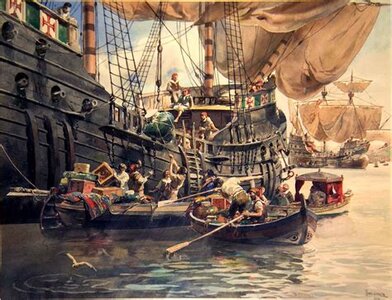Not quite so sure about belaying pins as a fixing point for the ropes. The last four steps in the photo are not served by a rope ladder. Would one get from the lower to the upper steps without a rope to hold onto standing on a rowing boat? Would a sailor have to go down the steps to fix the ropes or whoever climbs the ladder first would have to fix them himself first before climbing aboard. What about disembarking or untying the ropes once all are aboard or have disembarked.Thanks for your kind words..
…. and I just found this photo showing a two rope rig they used for this particular ship (Constitution?). Note the way the lines run through eyebolts but this is very much more recent times. Your decision to use knotted rope/s on the older depiction of your model would add some fun, interesting detail.
View attachment 290640
Addition to my post: I enlarged the photo above and as far as I can tell, the rope is tied to an eyebolt either side of the steps and the way the end of the ropes are served would suggest a permanent fixture. That is for the displayed ship, but may not generally constitute general practice on 18th century ships.
Last edited:









